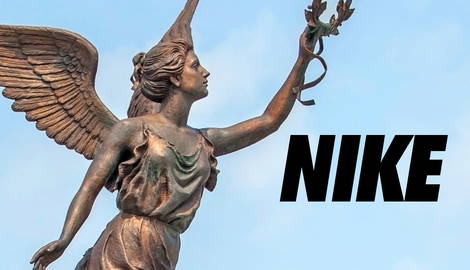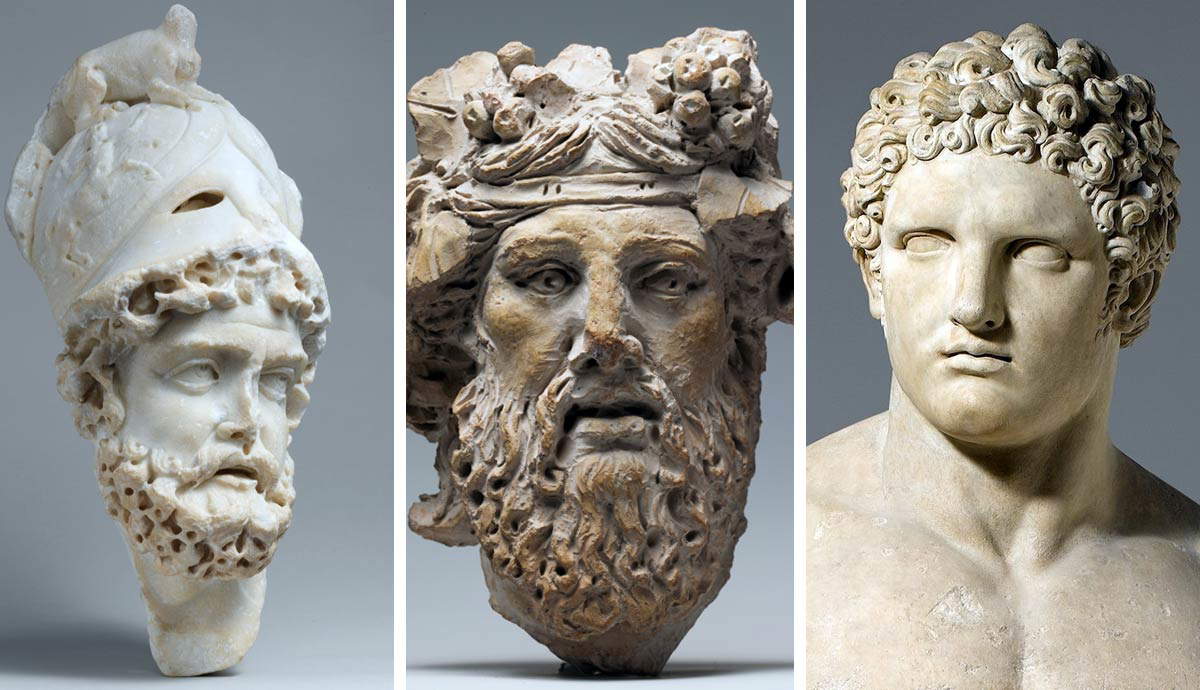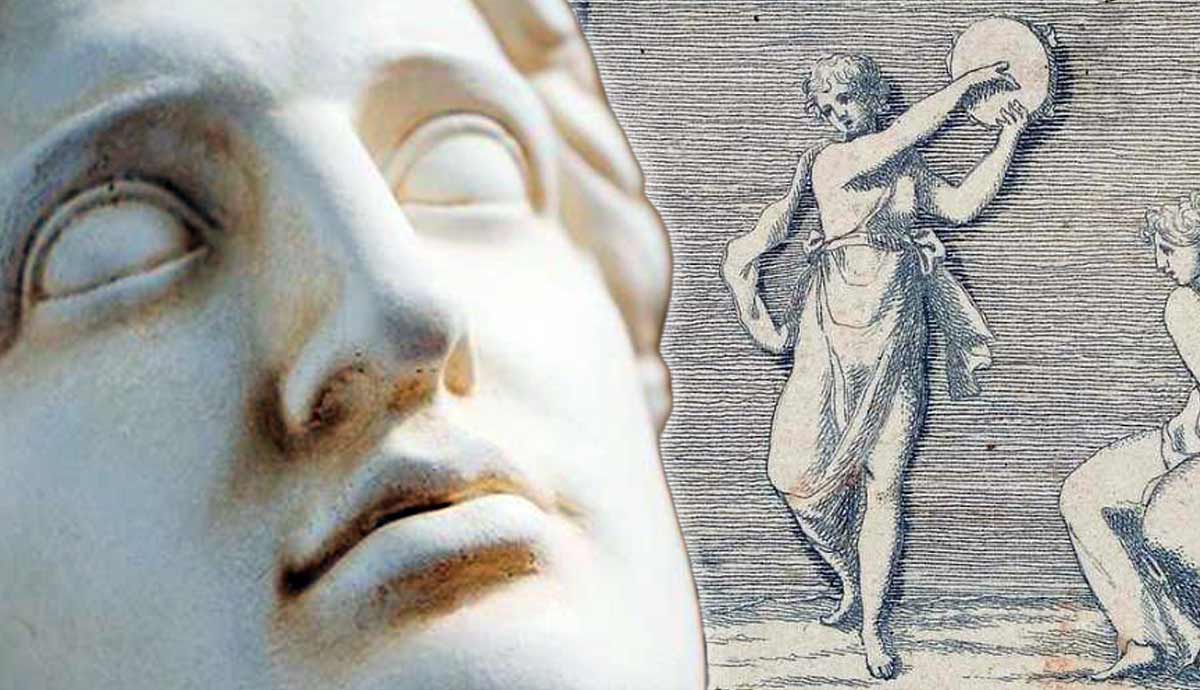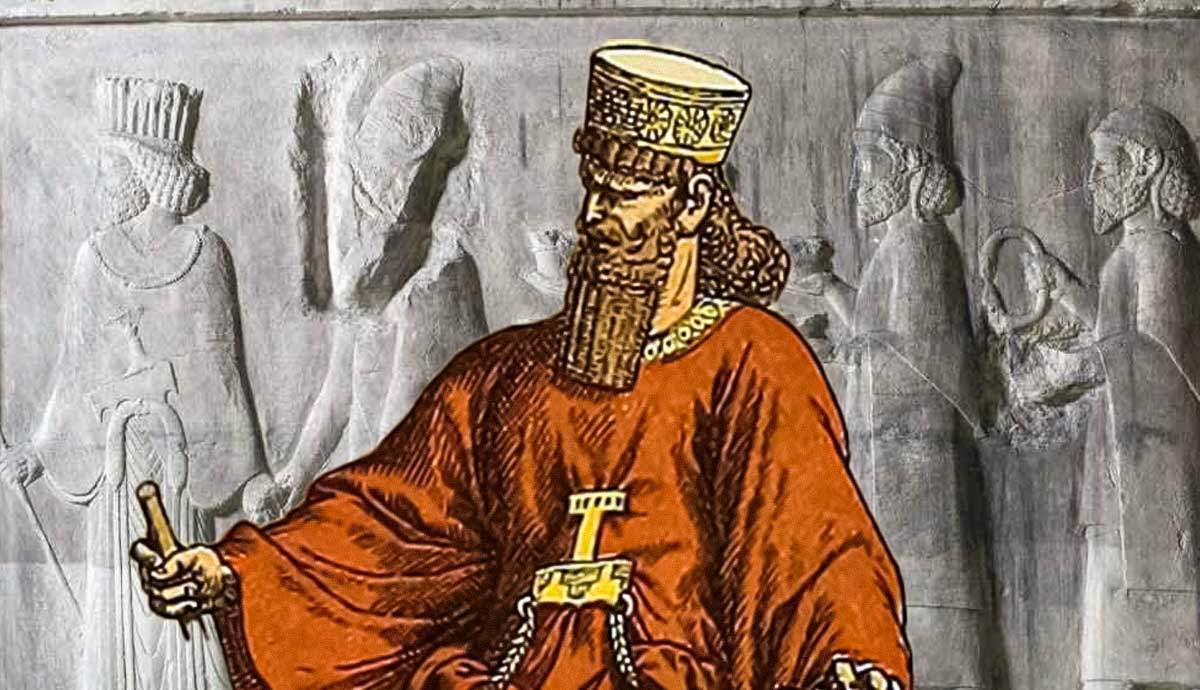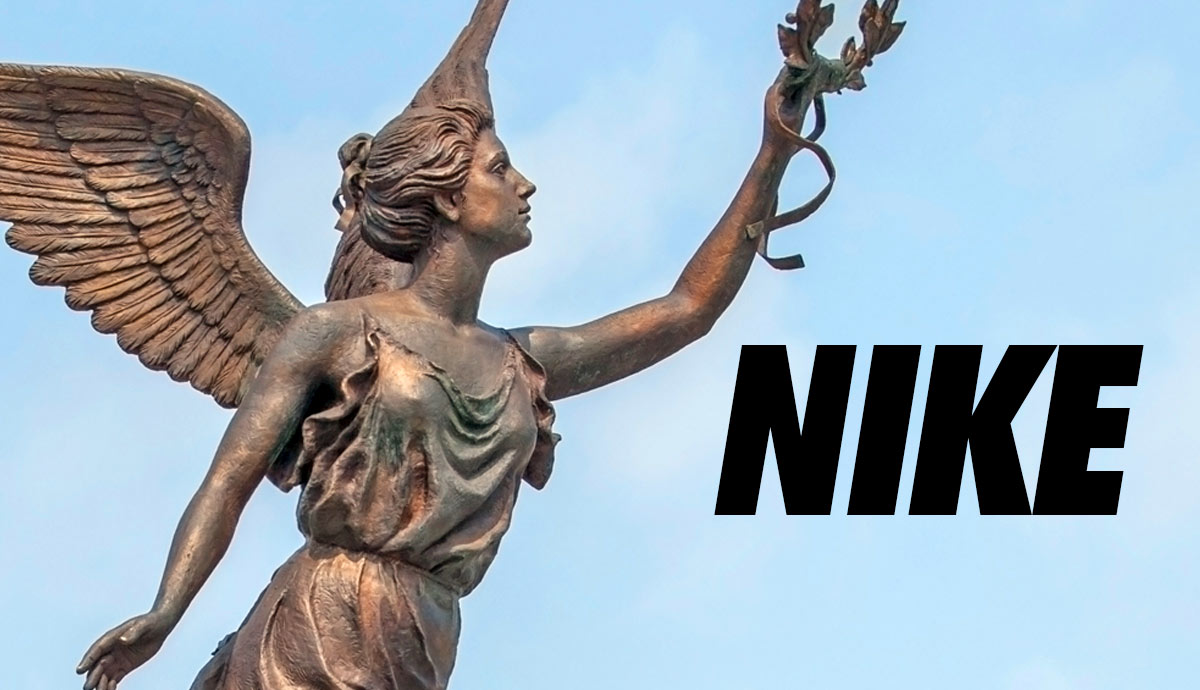
Nike was the Greek goddess of victory and an attendant of Zeus. While not among the 12 Olympian gods, she was described as a resident of Mount Olympus. Nike was commonly depicted as a winged woman holding various celebratory items, such as a sash or wreath to crown a victor, a cup and bowl to pour libations, or a lyre for victory songs. However, despite her regular appearances on coins, vase paintings, and temple reliefs, Nike was not prominently featured in Greek literature. She seemed to have been unknown to Homer and appeared only briefly in Hesiod’s Theogony, which was composed in the late 8th or early 7th century BCE. The next time she was featured in literature as more than a passing reference was in Nonnus Panopolis’ Dionysiaca in the 5th century CE, more than a thousand years later.
The Divine Parents of Nike

According to Hesiod’s Theogony, Nike was the daughter of Styx, the underworld river goddess, and Pallas, the Titan god of war. She was one of four children, all of whom represented abstract concepts. They were Zelos, the embodiment of zeal or rivalry; Bia, the personification of force; and Kratos, the incarnation of power or sovereignty. Later authors, such as Nonnus Panopolis in the Dionysiaca, also cite Zeus as her father.
Alternatively, in the Homeric Hymn to Ares, Nike was said to be a daughter of Ares. However, this is not supported by any other sources. While the Homeric Hymns are attributed to the 8th-century poet Homer due to their style and meter, the Hymn to Ares was a later addition to the collection, written centuries after Homer’s epics, The Iliad and The Odyssey.
Nike and the Titanomachy

Nike, along with her siblings, were given high honors in Olympus due to their role in the decade-long war between the Olympians, led by Zeus, and the Titans forces of Kronos, led by Atlas, according to Roman mythographer Hyginus. At the beginning of the war, Zeus called the gods to Olympus to ask for their help in defeating Kronos. He promised to maintain their respective roles in the cosmos, which they held under Kronos. To those gods that had no role in the order, he would award them a fair portion. On the advice of her father, Oceanus, Styx was the first to join Zeus, along with her children. Styx was made the great oath of the gods, and all her children were made attendants of Zeus and allowed to live alongside him.
Apart from her mention as the daughter of Styx and attendant of Zeus, Hesiod said nothing else of Nike. A millennium later, Nonnus Panopolis gave a vivid description of Nike’s part during Zeus’ conflict with Typhon in his epic poem, The Dionysiaca. In the epic, when Typhon had caused all the Olympians to flee to Egypt, Nike came to Zeus in the guise of the goddess Leto. She chastised him even as she armed him, imploring him to fight Typhon not only for the sake of the gods but also for the stability of the universe.

“Fight, brandish your lightning, the fiery spear of Olympos! Gather once more your clouds, lord of the rain! For the foundations of the steadfast universe are already shaking under Typhon’s hands: the four blended elements are melted!” (2.211-2.216)
In the ensuing battle, Typhon was escorted by Eris, a daughter of Nyx and the personification of strife. Zeus was led by Nike, who drove his chariot and guarded him with her shield. The conflict engulfed the world and reached up into the heavens. Typhon, with his innumerable arms, hurled mountains and trees at Zeus. The king of the gods blasted them out of the air with his thunderbolts. Zeus was helped by the children of Ares, Rout and Terror, whom he armed with his thunderbolts. But still, Typhon’s assault was unrelenting. It was a battle of attrition, but Zeus was ultimately victorious. Nike then drove him back up to Olympus.
Victory in Competition

Earlier representations of Nike often showed her in the context of athletic or musical contests. Many vase paintings depict her crowning athletes with wreaths to celebrate their achievements in sporting events such as the Olympics or other Panhellenic games. At Elis, where the Olympic games were held, Pausanias described an altar to Nike set up next to one for Zeus. Lyric poets such as Pindar and Bacchylides wrote dozens of victory poems to commemorate the achievements of winning athletes.
Coins from Elis and Sicily from the late 6th century BCE all commemorate victories in games rather than war, suggesting that Nike’s original sphere of influence didn’t extend into military affairs. It was only in the early 5th century BCE that her function shifted.
Victory in War

Nike gained special importance in Athens in the 5th century BCE after the Greek victory at Marathon against the Persians. A monument was raised on the spot where the invading army was routed, and a statue of Nike was set up on top of it. After the Greeks defeated the armies of Xerxes at Salamis, there was a resurgence in her imagery, presenting her as a goddess who was granted victory in war.
The temple of Athena Nike, that is, Athena in her role as the bringer of victory, still stands on the right side of the ascent up the Acropolis. While the Archaic temple was burned down when the Persians sacked Athens in the early 5th century BCE, it was later rebuilt and decorated with sculpted friezes of Athenian military achievements.
The cult statue set up in the temple of Athena Nike, also called the temple of Wingless Victory by Pausanias, was said to be wingless to ensure that Victory never left the city of Athens. Throughout the Classical and Hellenistic eras, coins were minted with her image, and statues of her were erected after consequential battles. Nike’s likeness was also represented in vase paintings that were widely distributed across mainland Greece. Alexander the Great used her image on coins to allude to his career of conquest and future victories.
Athena or Nike?

While Hesiod’s version of Nike’s origin made her out to be a distinct goddess, she was often associated with Athena as an aspect of that goddess’ personality. Evidence of a cult to Athena Nike dates to as early as the 7th century BCE from the base of what was thought to support a statue of the goddess. There is still debate as to whether Nike had always been a distinct goddess and then was assimilated into Athena as Athens gained more power and influence or whether she began as an attribute of Athena and later split from her into her own identity.
An argument against Nike being an abstraction of Athena is the Decree of Themistocles of Troezen, which referenced sacrifices to Athena and Nike individually, though this point is still debated. There is also the presence of wings in Nike’s iconography dating back to the 6th century BCE, such as on the Nike of Delos, one of the first freestanding sculptures of the goddess. Poets such as Aristophanes, in his play Birds, performed in the late 5th century BCE, acknowledged that Nike was a winged goddess like Iris or Eros. This feature is notably lacking from any representations of Athena, even in her role as Athena Nike.

Additionally, Nike’s association with Zeus cannot be overlooked. Like the Athena Parthenos statue set up in the Parthenon, which held a smaller statue of Nike in her hand, there was also a statue of Zeus at Olympia holding Nike in his hand. At Olympia, Nike and Zeus shared an altar. In Bacchylides’ Ode 11 For Alexidamus of Metapontion, the poet wrote that it was by Zeus’ authority that Nike grants victory to gods and mortals alike. If Nike did originate as an abstraction of a different deity, then it stands to reason it would be from Zeus.
Most arguments for Nike splitting off from Athena come from her increase in prominence after the Persian wars, yet the consistency with which she was represented leaves doubt. Despite the presence of the temple to Athena Nike on the Acropolis as early as the 7th century BCE, it would be problematic to assume that the images of winged Nike are in some way representations of Athena.
Nike as a Cosmic Force

Hesiod’s Theogony served in part to explain Zeus’ justice and how his rule differed from that of his predecessors. A brief passage, lines 383-403, describes the birth of Nike and her siblings and the oath Zeus made to their mother, Styx, that brought them into his service. Styx had no role in the previous order, so she was the first of the gods to pledge allegiance to Zeus during his war against Kronos. His oath was to grant fair powers to all gods, and he kept his word when he made Styx’s waters the oath by which all gods swear, thus bringing Nike and her siblings over to his side.
The oath guaranteed Zeus’ supremacy in the cosmos, giving him authority over the incarnations of sovereignty, victory, and the power needed to maintain his own. Thus the oath guaranteed Zeus’ power and was also guaranteed by Zeus’ power. Under Zeus’ rule, oaths upon the waters of Styx were how the gods settled their disputes, rather than through violence, as was done under Ouranos and Kronos. Without Styx and the power her children gave him, Zeus would not have been able to enforce his new order.
Selected References
Blickman, D. R. (1987) “Styx and the Justice of Zeus in Hesiod’s Theogony,” Phoenix, 41(4), 341–355
Schäfer, M. (2023) “Nike on Hellenistic Lead Tokens from Athens: Iconography and Meaning,” in M. E. GKIKAKI (ed.) Tokens in Classical Athens and Beyond, Liverpool University Press, pp. 179-204
Sheedy, K. (1985) “The Delian Nike and the Search for Chian Sculpture,” American Journal of Archaeology, 89(4), 619–626
Sikes, E. E. (1895) “Nike and Athena Nike,” The Classical Review, 9(5), 280–283
